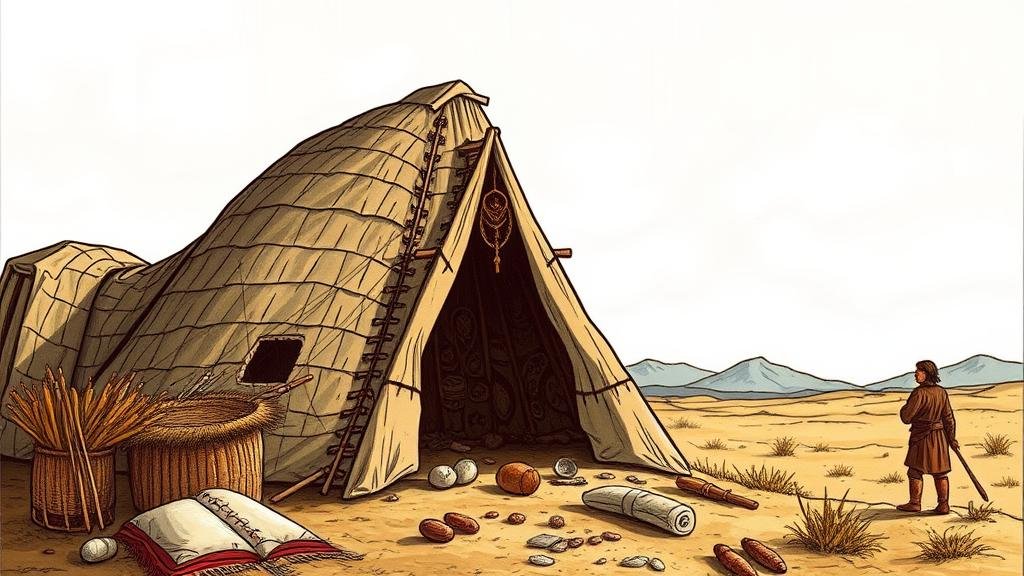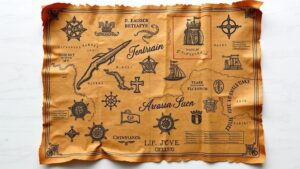Mining Native Tribal Oral Histories for Stories of Sacred Artifact Locations
Mining Native Tribal Oral Histories for Stories of Sacred Artifact Locations
This research article investigates the significance of oral histories among Native tribes and their role in locating and understanding sacred artifacts. By analyzing individual narratives, this study aims to highlight how traditional stories contribute to cultural preservation while promoting environmental stewardship and community identity.
The Importance of Oral Histories in Native American Cultures
Oral histories serve as a pivotal component of many Native American cultures, acting as the primary method for passing down knowledge, traditions, and moral teachings through generations. According to the Smithsonian Institution, more than 300 distinct tribes in North America recognize oral traditions as central to maintaining their cultural heritage (Smithsonian, 2021).
- Oral histories preserve linguistic diversity, as many indigenous languages remain unwritten.
- They convey spiritual beliefs and practices vital for cultural identity.
Case Studies of Sacred Artifact Locations
Several studies illustrate how oral histories can reveal specific locations of sacred artifacts–objects imbued with spiritual significance. For example, the Acoma Pueblo in New Mexico contains narratives that detail sacred sites where ancestors are believed to have interacted with divine beings. These oral accounts guide the community in preserving sites that might otherwise be overlooked by modern archaeological efforts.
Acoma Pueblo
The Acoma Pueblo, one of the oldest continuously inhabited communities in the United States, utilizes oral traditions to protect important sites. Elders recount stories of the creation of their world, which are intimately linked to the geography of the surrounding land. According to historian Andrew W. Mellon, these oral histories highlight locations of sacred shrines and burial sites, which are protected under tribal law (Mellon, 2020).
Methodologies for Collecting and Analyzing Oral Histories
The collection and analysis of oral histories require ethical considerations and methodological rigor. Projects often involve community engagement, ensuring that tribal members are cooperative participants rather than subjects of study. Techniques include:
- Interviews with tribal elders to gather firsthand accounts.
- Collaboration with local cultural organizations for context and validation.
Plus, researchers must be sensitive to the confidentiality and ownership of these stories. A prominent framework for such engagement is the Two-Eyed Seeing approach, which combines Indigenous knowledge systems with Western methodologies (Bartlett et al., 2012).
Implications for Archaeology and Preservation
Understanding sacred artifact locations through oral histories presents multiple implications for archaeology. Traditional archaeological methods often rely on material culture; however, integrating oral traditions can yield a more holistic view of a site’s significance.
- Oral histories can inform archaeologists about sites that may not have visible remains yet still hold cultural importance.
- They can enhance the interpretation of archaeological findings, providing context that written records cannot.
Challenges and Limitations
Despite the benefits, there are challenges in mining oral histories for sacred artifact locations. e include:
- Access to stories may be restricted due to cultural protocols.
- The potential for misinterpretation or misuse of sensitive information.
Researchers must navigate these obstacles with care, prioritizing respect for the tribes values and beliefs. Potential misappropriation of sacred knowledge can lead to significant consequences, as seen in various high-profile cases of artifact theft and cultural exploitation (Bright, 2019).
Conclusion and Actionable Takeaways
The integration of Native tribal oral histories into archaeological practices offers profound insights into the locations and meanings of sacred artifacts. By valuing these narratives, researchers and cultural institutions can promote a more respectful and enriched understanding of Native American cultures.
For future studies, it is critical to:
- Engage with tribal communities in a respectful and ethical manner.
- Seek collaboration that honors traditional knowledge systems.
By embracing these strategies, researchers can help preserve vital cultural narratives while fostering a deeper connection between academia and Indigenous communities.
References
- Bartlett, C., Marshall, M., & Marshall, A. (2012). Two-Eyed Seeing: A Framework for Understanding in Indigenous Research. Indigenous Knowledge Research.
- Bright, J. (2019). The Consequences of Cultural Exploitation. Journal of Archaeological Ethics.
- Mellon, A. W. (2020). Sacred Narratives and Site Preservation at Acoma Pueblo. American Indian Culture and Research Journal.
- Smithsonian Institution. (2021). The Role of Oral Histories in Cultural Preservation. Smithsonian Research Library.



